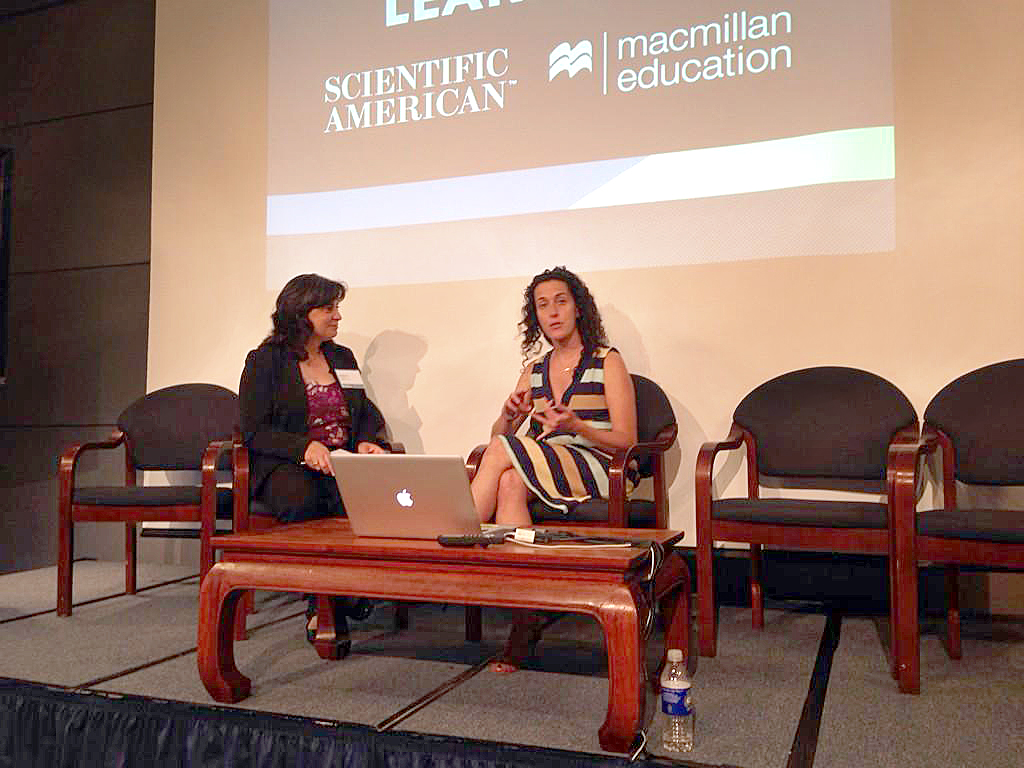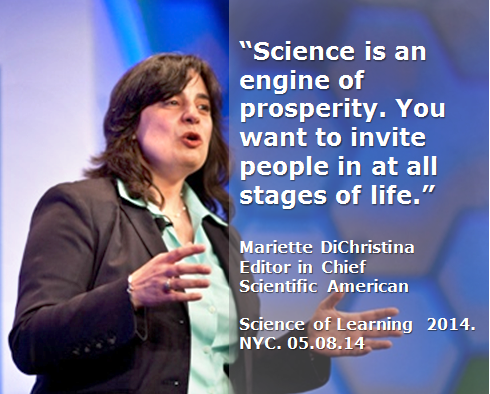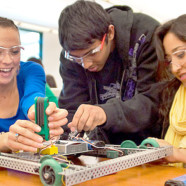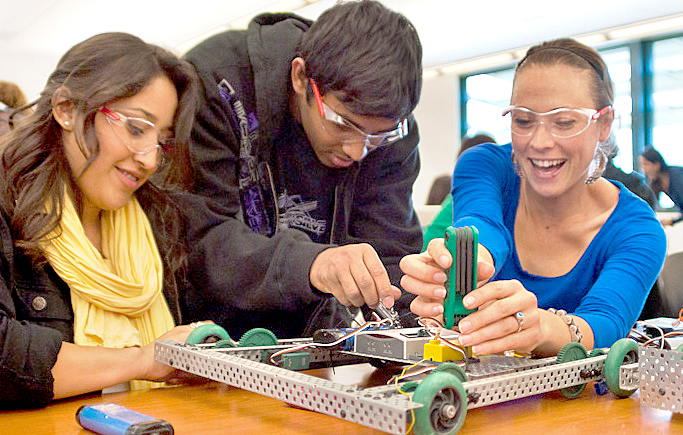STEM Education
Three Strategies for Improving STEM Education.
“Science is an engine of prosperity. You want to invite people in at all stages of life.”
Such were the words of Marietta DiChristina, Editor in Chief of Scientific American and co-organizer of the 2nd annual Executive STEM Summit in New York City. On August 5, leaders in academia, educational technology, and policy gathered at the event focused on “the Science of Learning.” And although they came from different fields, the attendees were united by a sense of urgency in improving STEM education.

DiChristina (left) spoke with Google’s Cristin Frodella about the Google company’s education initiatives, including madewithcode.com for girls. (courtesy image)
Macmillan Education organized the Executive Summit in order to bring together leaders in different sectors so that they could work together to improve STEM education. Susan Winslow, Vice President of Marketing at Macmillan Education, Higher Education and co-organizer of the event, explained that the goal was to have a “critical, thoughtful discussion on how to tackle the challenges before us and how to evaluate and study learning through a scientific lens. We all need to better understand what leads to a learning moment and what then produces the most effective learning outcome.”
1. Properly Assess What and How Students Are Learning
Scientifically studying the practice of teaching has many benefits, but it is not an easy task. Dr. Julia Phelan, Senior Researcher/Project Director at UCLA/CRESST described the challenges of studying teaching, including finding places to do research and the difficulty of doing randomization. The public also has certain expectations when it comes to good teaching, such as perfect implementation of new initiatives like Common Core without any time for teachers to experiment.
However, there’s hope. Big data has been proposed as one way to gather more information about the impact of teaching and how students are learning. The technology that Dr. Ryan Baker, Associate Professor at Teachers College Columbia University, has developed assesses whether students are bored, frustrated, or engaged as they interact with educational technology. This information can be used to give immediate feedback to the student or teacher so that interventions can be implemented.
However, keep in mind the caveats: Dr. Anthony Kelly, Professor of Psychology at George Mason University, reminded us that as we use technology in new ways to gather data, we must be aware of the new ethical issues that emerge. For example, big data offers promising ways to track progress over time, but we need to think how that data will be used.
2. Know and Implement What Works
Despite some of the difficulties in studying learning, researchers have been able to identify many effective learning strategies. Dr. Michele Withers, Associate Professor at West Virginia University, emphasized, “The one doing is the one learning.” Dr. Withers demonstrated how multiple-choice questions could be active learning if students work together and discuss their reasoning.
It’s also vital to know what doesn’t work, as Dr. Mark McDaniel, Professor of Psychology at Washington University in St. Louis, proved. McDaniel shared data that shows that our hunches about how to do something are not always right. Rereading texts, a favorite study method of many students, has been shown to have no effect on how well students do on assessments. Strategies that work include giving frequent, low-stakes quizzes and mixing topics. For example, subjects retained more information about different art movements when they studied several movements simultaneously instead of each movement individually.
Several of the attendees were impressed by what we already know about learning, but were frustrated that this information is not making it into schools. As Dr. Matt Greenfield, managing director at ReThink Education, remarked, “There is a great deal of sound research in pedagogy that is being ignored by universities, teachers, entrepreneurs, and venture capitalists.”
According to Dr. McDaniel, “The research is clear, but teachers need more guidance.” Translating research into classroom practices is a major undertaking hampered by too little communication. Perhaps collaboration among cognitive physiologists, education physiologists and STEM teachers could help turn research into practice.
3. Recognize Successes, and Identify Those Initiatives That are Working
Although institutions as a whole may be slow to change, some innovations are reaching classrooms.
As Group Marketing Manager for Google, Christina Frodella is helping to provide tools that help teachers. Teachers that take part in the Google Teacher Academy report that the networking with other innovative teachers is one of the most rewarding aspects of the training, which suggests that facilitating supportive learning communities may be one way to help teachers adopt innovative practice.
After winning the Nobel Prize for Physics in 2001, Dr. Carl Wieman, Professor at Stanford University, became interested in improving science education. Like other speakers, he began including more student practice and frequent instructor feedback in his courses. The most effective motivational tool he has found has been videotaping students actively practicing during class so that other instructors can see how engaged they are. He acknowledged that fostering institutional change is difficult, but he believes that if universities made a commitment to effective teaching a recruitment tool, they could catalyze the adoption of effective techniques.

Marietta DiChristina, Editor in Chief of Scientific American and co-organizer of the 2nd annual Executive STEM Summit in New York City
To further the goal of fostering collaboration among the different sectors represented at the Executive Summit, the organizers announced the Macmillan Education Connections Grant. This $5,000 award will be given to attendees that collaborate to create innovative ideas that improve STEM education.
And beyond schools and universities, individual students are proving success in the STEM fields. The event concluded with the announcement that Kenneth Shinozuka, 15, from New York, is the winner of the third annual Scientific American Science in Action Award, powered by the Google Science Fair. Kenneth’s project is a wearable device that senses when patients with Alzheimer’s disease wander and alerts their caregivers.
Kenneth’s invention is a perfect example of the way science, technology, engineering and math can improve the lives of people, and a good reminder why improving education in these fields should be a priority.
Source: David Wisnieski / edSurge


